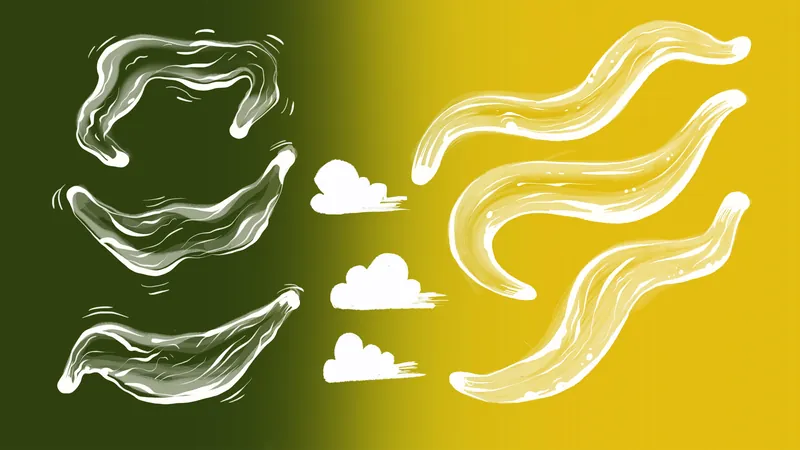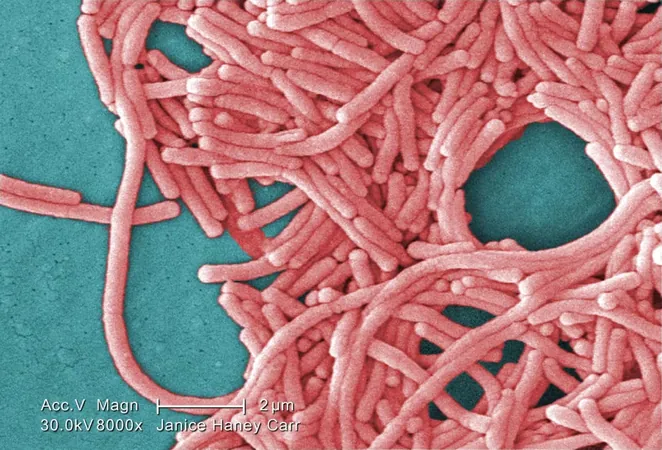
Is Death in the Air? How Worms React to Their Dead and What It Means for Their Future
2025-05-22
Author: Amelia
The Unseen Danger: How Death Affects the Living
Have you ever wondered how living organisms react to death? It turns out that the mere presence of a deceased counterpart can trigger intense responses across various species. Just like ants and bees that instinctively clear out their deceased to protect their hives from disease, roundworms, or C. elegans, have shown similar behavior—highlighting the profound impact of mortality even among tiny creatures.
A Game-Changer for Worms: Accelerated Reproduction and Shorter Lifespans
Exciting new research from the University of Michigan reveals that C. elegans not only avoid dead members but that this interaction dramatically alters their behavior and biology. The worms quicken their reproductive rate while simultaneously shortening their lifespan when exposed to their deceased companions.
Matthias Truttmann, Ph.D., a key researcher on the project, stated, "This was a unique opportunity to explore the mechanisms that enable C. elegans to recognize death and react to it.” Lead author Mirella Hernandez-Lima, a graduate student in Truttmann's lab, helped uncover these astonishing insights.
From Curiosity to Discovery: How Worms Detect Death
The breakthrough came when researchers observed that worms in a dish instinctively moved away from their deceased counterparts. With no eyes to perceive their world, how could these worms sense death? The team suspected that corpses might emit a universal death signal.
To test their hypothesis, they placed either worm bodies or fluid derived from these corpses in different feeding areas. The results were telling: C. elegans showed a strong aversion to both, suggesting a keen perception of death that impacts their behavior.
Smelling the End: The Neurosensory Connection to Death
Further investigation revealed that exposure to the essence of death led to reduced fitness in the worms, alongside a temporary uptick in egg-laying. Researchers honed in on the sensory neurons responsible for death perception, focusing on two key neurons involved in olfactory responses: AWB and ASH. In essence, these worms could "smell" death.
Truttmann’s team identified two specific metabolites, AMP and histidine, typically only found within living cells, as the death cues for these worms. He explained, "These neurons, known for responding to environmental stimuli, now also detect cell debris that signals something has gone wrong."
Implications Beyond the Lab: A Broader Understanding of Life and Death
Truttmann suggests that the detection of unseen cellular metabolites could be a signal of death honed by evolution itself. This fascinating discovery resonates even in humans, where dying cells release metabolites that trigger changes in neighboring tissues. Could understanding these mechanisms in worms lead to insights into our own biology? As this research unfolds, the answers may not just illuminate the life of C. elegans, but could redefine how we comprehend the cycle of life and death across species.









 Brasil (PT)
Brasil (PT)
 Canada (EN)
Canada (EN)
 Chile (ES)
Chile (ES)
 Česko (CS)
Česko (CS)
 대한민국 (KO)
대한민국 (KO)
 España (ES)
España (ES)
 France (FR)
France (FR)
 Hong Kong (EN)
Hong Kong (EN)
 Italia (IT)
Italia (IT)
 日本 (JA)
日本 (JA)
 Magyarország (HU)
Magyarország (HU)
 Norge (NO)
Norge (NO)
 Polska (PL)
Polska (PL)
 Schweiz (DE)
Schweiz (DE)
 Singapore (EN)
Singapore (EN)
 Sverige (SV)
Sverige (SV)
 Suomi (FI)
Suomi (FI)
 Türkiye (TR)
Türkiye (TR)
 الإمارات العربية المتحدة (AR)
الإمارات العربية المتحدة (AR)